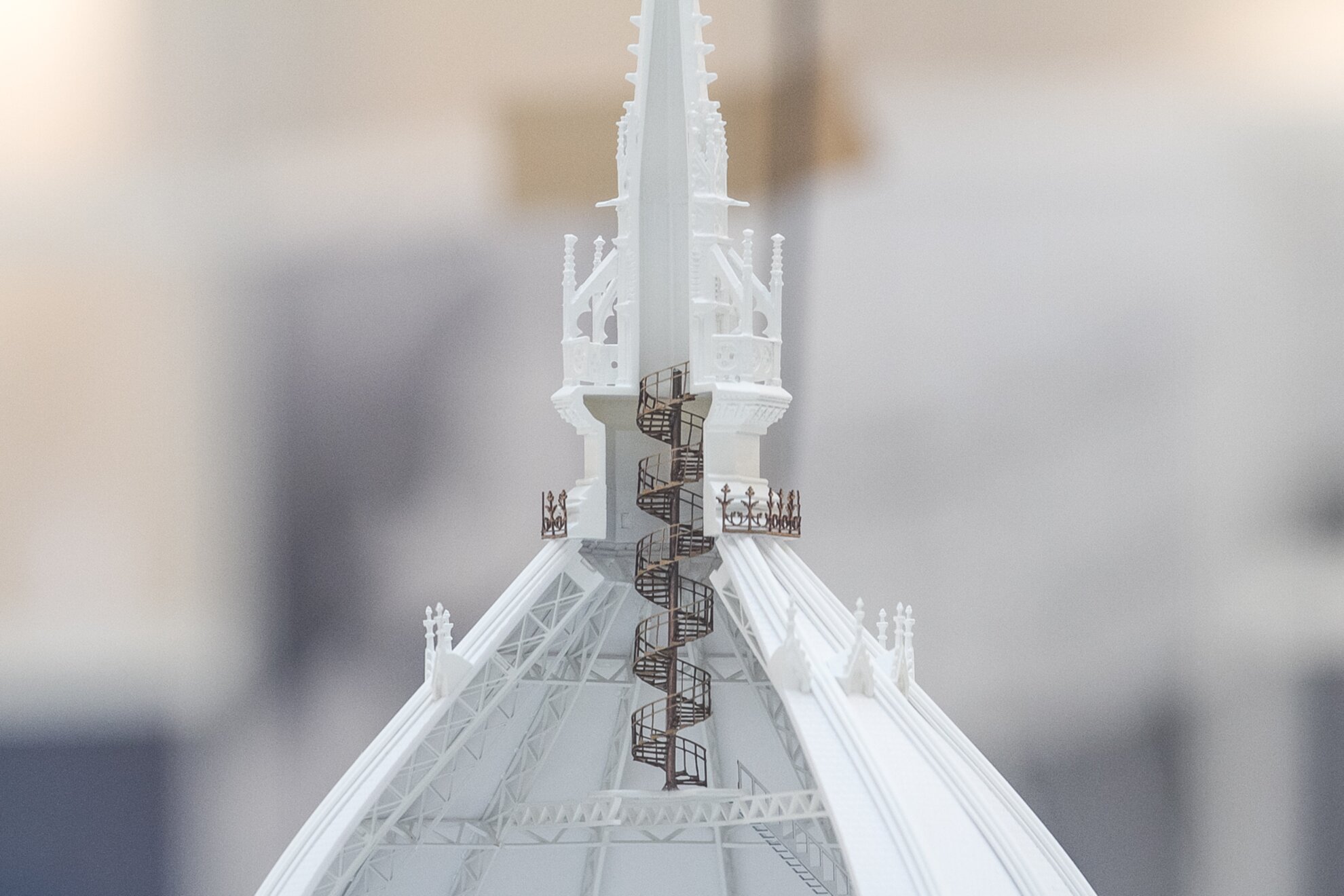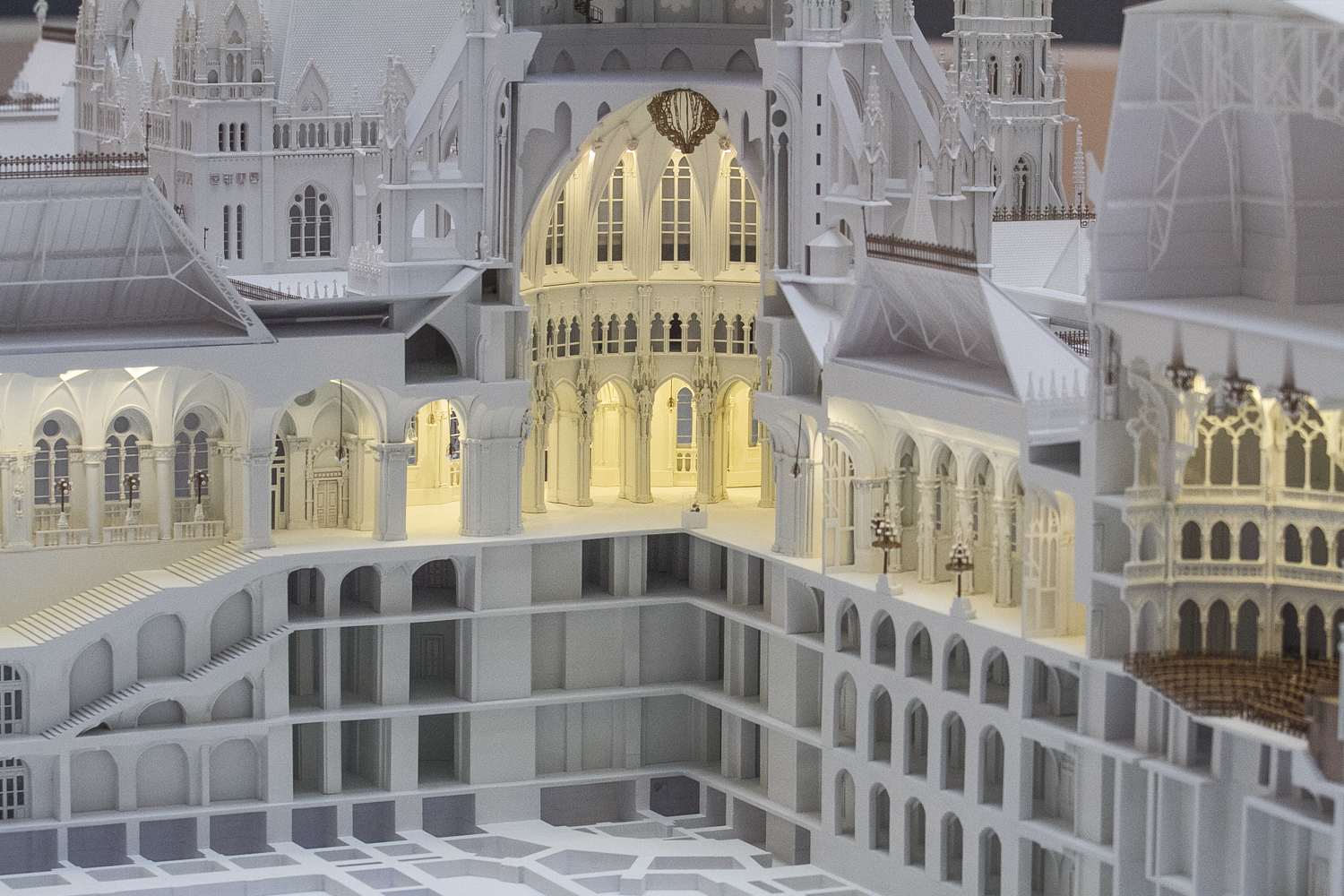The building itself is full of architectural details that are impossible to see from the street level, yet can be easily observed on the model. The building's designer, Imre Steindl, saw a number of Gothic buildings during his studies in Germany and perhaps this explains why the Parliament features several decorative elements of medieval buildings; for example, we can observe different mythical figures such as gargoyles, monkey dogs and other monsters.

The facades feature Hungarian kings, as well as chamois (of the goat-antelope species), dragons and Jewish men with sideburns said Péter Hajnal, one of the leaders of the model-making team. He knows the building to its smallest details.

The model’s scale is 1:100, so one meter in real life equals one centimeter on the maquette. The architectural sections and decorations are designed in incredible detail, so only the smallest ornaments were left out – for example, sculptures under thirty centimeters (which would be three millimeters on the model) did not make the cut. “We could have added the smallest details as well, but based on our experiences, we decided to keep to a scale that is easy on the eye,” said the artist.


19 architects and sculptors worked on the maquette for 9000 hours, led by Márton Bojti and Péter Hajnal. The designing started with a 3D computer model, then the team decided on what materials to use and specified what recurring elements could be pre-manufactured. There were very few of the latter, since most of the building is unique, even if some of the details appear to be similar at first glance. As a sort of joke, the visitor center of the model has an extra small maquette as well, with a 1:10000 ratio to the real Parliament.

The execution was made more difficult by the fact that there were not many original plans available that the team could use. In general, they used the latest technologies (CNC, laser cutting, 3D printing), but the finest details had to be made by hand. The statues, for example, were made by the women in the team with sewing needles and other unusual patterning tools. The majority of the maquette is plastic, while some parts were made with copper and from special papers by using laser cutting.

Although the team has a lot of experience in creating similar items, it is no secret that almost all of Hungary's model-making community helped their work. Many professionals and a lot of knowledge united on this project, so it's now wonder that a similar model has probably never been made abroad with reference to size and quality.


An illuminated roof will soon complement the model of nearly 2.2 tons, which will further accentuate the fine architectural details. It is worth checking out; anyone interested in architecture even just a little bit will spend a lot of time admiring the model.




